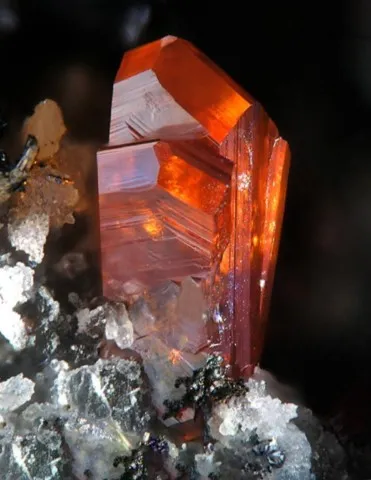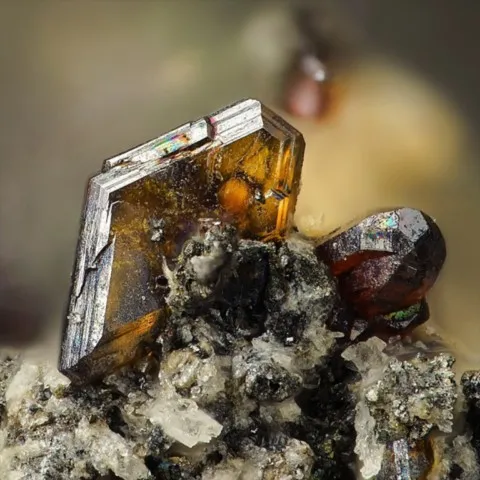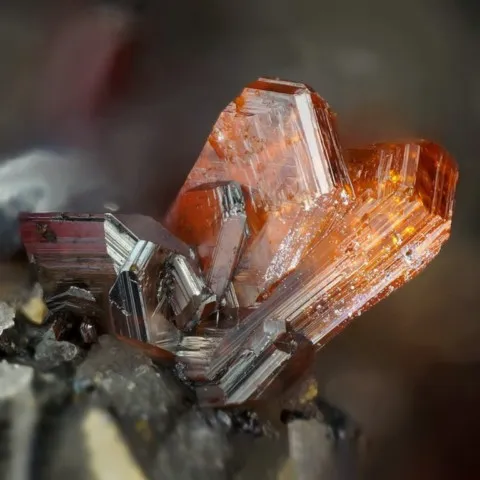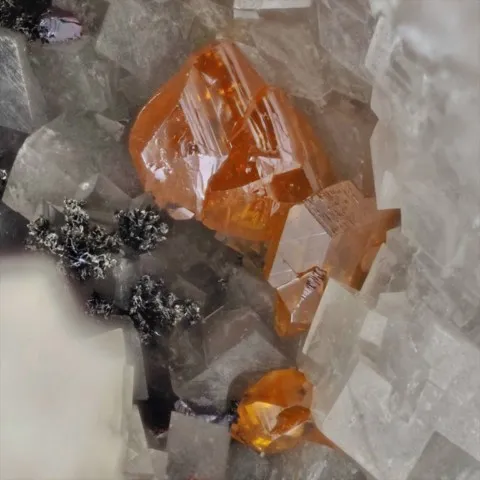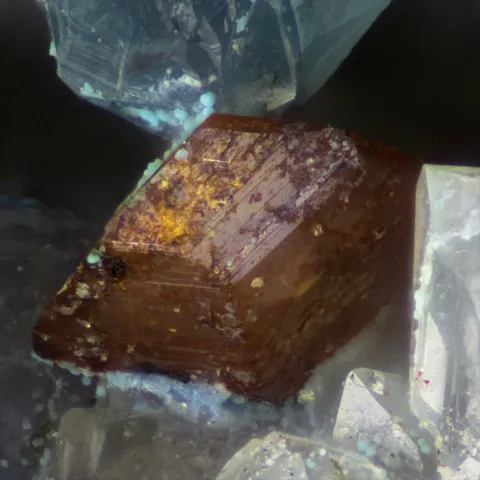XANTHOCONITE
Class : Sulfides and sulfosalts
Subclass : Sulfosalts
Crystal system : Monoclinic
Chemistry : Ag3AsS3
Rarity : Rare
Xanthoconite is a rare sulfosalt from silver-bearing hydrothermal deposits, in which it modestly accompanies silver minerals that are much more abundant than it (pearceite, polybasite, acanthite, etc...) as well as other sulfides. Xanthoconite is the isomorph of pyrostilpnite. Its name comes from the Greek xanthos (yellow) and konis (powder) in reference to the color of its trace. Xanthoconite forms rare crystals that do not exceed 5 mm. Sometimes twinned, they are cinnamon brown in color and have a pseudohexagonal habitus. Its lamellar crystal structure is responsible for its cleavage on {001}, it has a strong adamantine luster.
Main photo : Xanthoconite from Imiter mine, Morocco © Christian Rewitzer
Xanthoconite in the World
Twinning
Twinning is known on {001} giving pseudo-orthorhombic facies.
Fakes and treatments
No fakes listed for this mineral species.
Hardness : 2 to 3
Density : 5.54
Fracture : Sub-conchoidal
Streak : Yellow-orange
TP : Translucent
RI : Greater than 3
Birefringence : -
Optical character : Biaxial -
Pleochroism : None
Fluorescence : None
Solubility : -
Magnetism : NoneRadioactivity : None

